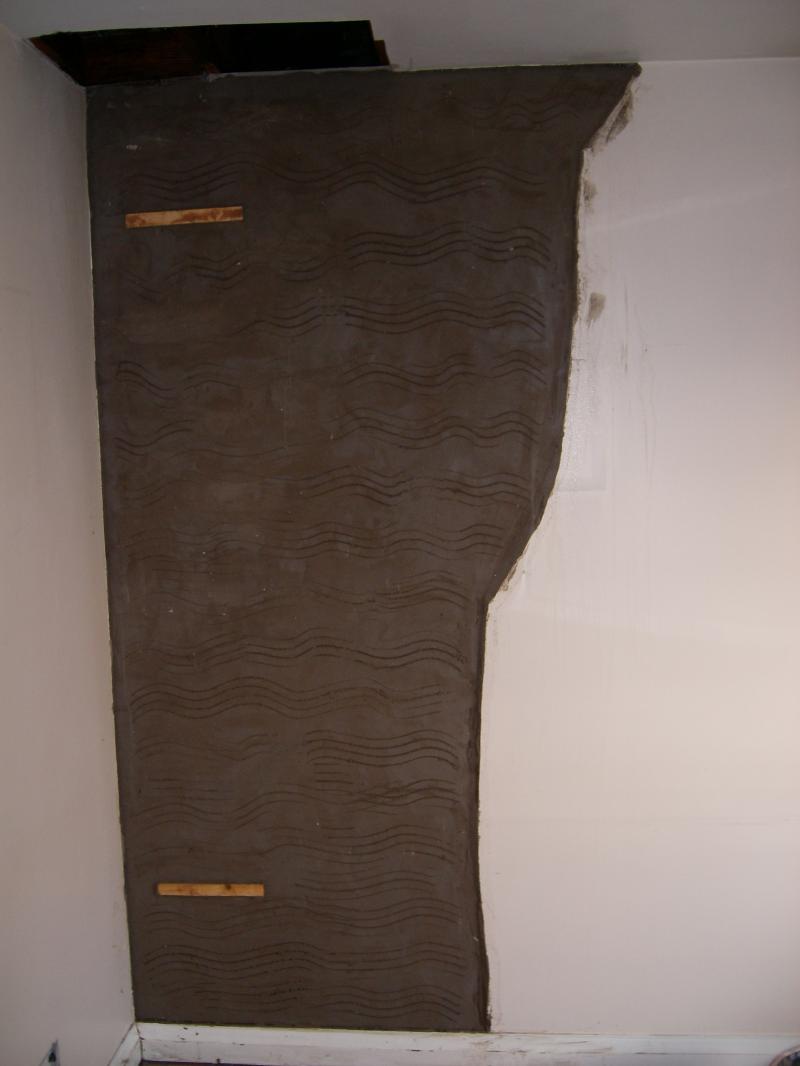Hello all,
Have experimented using different undercoat plasters on refurb of the house so far.
Need to do a patch about 1.5m wide and standard ceiling height (2.4m) in the smallest bedroom.
It is on an external wall and will be brick - I think the cracking is due to a chimney stack. Not stripped it off yet - Saturday's job.
The easiest solution would probably be an undercoat plaster and multi to skim the whole wall.
However, I'd like to get some experience with render, so thought this a good opportunity
I've kept an eye on the rendering posts recently - but would like some specific help before I jump in.
Sorry guys - a raft of Qs!
Was thinking:
1) Wetting down bricks first (or even SBR? or is PVA ok for internal use with render?) Thinking about the join to existing plaster on wall.
2) Scratch coat sand/cement 4:1 (possibly with 1 part hydrated lime?)
Does it need plasticiser and/or waterproofer in the scratch for internal use?
3) top coat sand/cement 5:1 (possibly with 1 part hydrated lime if used in scratch?)
General Qs:
- Is a plaster mixer ok for mixing render ?
- Once a scratch coat is on, how long typically before it sets sufficiently to scratch it ? I'm guessing it doesn't set as fast as Bonding etc!
- Are the usual sheds ok for rendering materials (cement, sand, lime) or better off at a builders merchants?
- finally on the sand - is plastering sand ok? e.g. http://www.wickes.co.uk/Plastering-Sand/invt/224666
Big TIA!
Have experimented using different undercoat plasters on refurb of the house so far.
Need to do a patch about 1.5m wide and standard ceiling height (2.4m) in the smallest bedroom.
It is on an external wall and will be brick - I think the cracking is due to a chimney stack. Not stripped it off yet - Saturday's job.
The easiest solution would probably be an undercoat plaster and multi to skim the whole wall.
However, I'd like to get some experience with render, so thought this a good opportunity
I've kept an eye on the rendering posts recently - but would like some specific help before I jump in.
Sorry guys - a raft of Qs!
Was thinking:
1) Wetting down bricks first (or even SBR? or is PVA ok for internal use with render?) Thinking about the join to existing plaster on wall.
2) Scratch coat sand/cement 4:1 (possibly with 1 part hydrated lime?)
Does it need plasticiser and/or waterproofer in the scratch for internal use?
3) top coat sand/cement 5:1 (possibly with 1 part hydrated lime if used in scratch?)
General Qs:
- Is a plaster mixer ok for mixing render ?
- Once a scratch coat is on, how long typically before it sets sufficiently to scratch it ? I'm guessing it doesn't set as fast as Bonding etc!
- Are the usual sheds ok for rendering materials (cement, sand, lime) or better off at a builders merchants?
- finally on the sand - is plastering sand ok? e.g. http://www.wickes.co.uk/Plastering-Sand/invt/224666
Big TIA!


